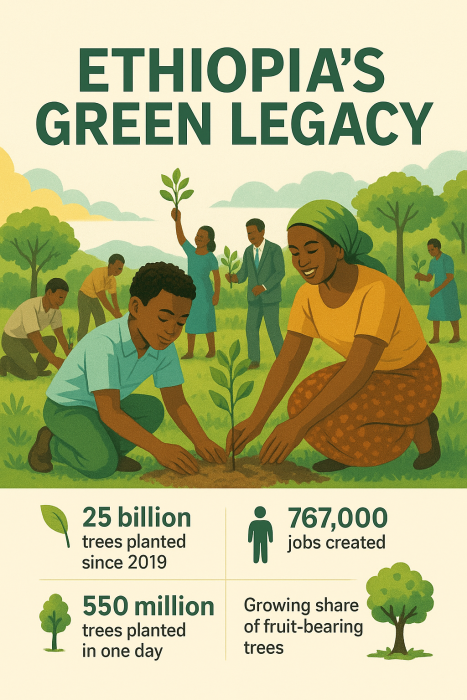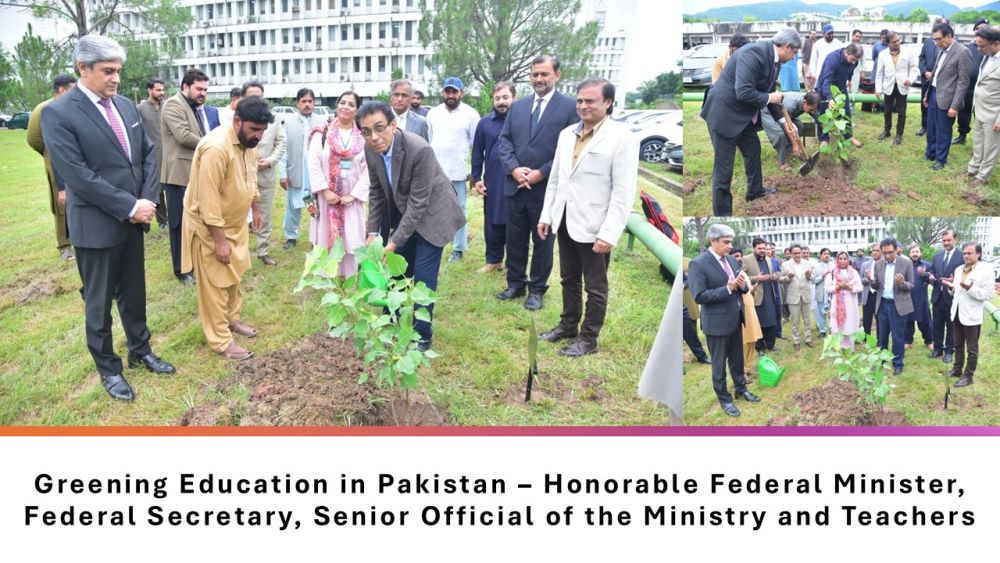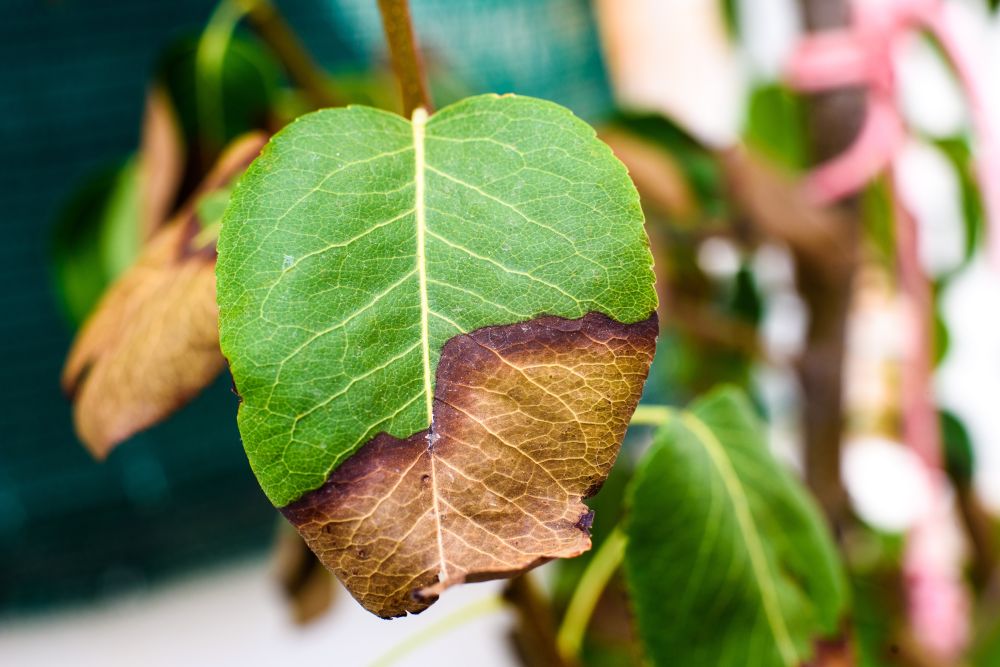44/25 Ethiopia’s Green Legacy: An Impressive Experiment in Reforesting the Future
Posted 4 months ago
On a cool morning in Addis Ababa, schoolchildren, farmers, office workers, and even government ministers gather with saplings in hand. They bend to the earth, pressing seedlings into the soil with an ordinary and monumental rhythm. This is not a one-off gesture of goodwill. It is part of one of the most ambitious climate and reforestation campaigns on the planet: Ethiopia’s Green Legacy Initiative.
Launched in 2019 by Prime Minister Abiy Ahmed, the initiative began with an almost implausible target, 20 billion trees planted in just four years. Few believed it was possible in a country long associated with drought, famine, and deforestation. But Ethiopia defied the skeptics. By 2022, citizens had planted 25 billion seedlings, reshaping the country’s ecological story and positioning Ethiopia as a surprising global leader in the fight against climate change.
More Than Just Numbers
The Green Legacy Initiative is about planting trees and cultivating resilience. Ethiopia lost much of its forest cover over the past century, along with fertile soil, reliable rainfall, and food security. The initiative aims to reverse that trajectory.
The impact has been multi-layered:
Environmental restoration: Forest cover is growing, watersheds reviving, and soil erosion slows.
Economic opportunity: Seedling nurseries and land restoration projects have created more than 767,000 jobs, many for young people and women.
Food security: Increasingly, seedlings include fruit trees—avocado, mango, papaya—linking reforestation with nutrition and agricultural income.
Community ownership: Tens of millions of Ethiopians participate each planting season, making the effort not just a government policy but a cultural movement.
Record-Breaking Ambition
Ethiopia has repeatedly captured headlines with its massive single-day planting campaigns. In 2019, more than 350 million trees were planted in 12 hours, an effort that earned worldwide attention and set a world record. In 2023, the campaign pushed even further, mobilizing 32 million people to put over 550 million seedlings into the ground in a single day.
These efforts are staggering in scale. They raise a profound question: Can a developing country with limited resources do what wealthier nations have not, mobilize its people on a scale that genuinely shifts the environmental balance?
The Challenges of Scale
Of course, tree planting is easier than tree growing. Critics note that many seedlings may not survive without sustained care. Others worry that the rapid pace sometimes leads to planting the wrong species in fragile ecosystems. Ethiopia’s government has acknowledged these concerns, introducing more diversified planting strategies, strengthening community stewardship, and deploying technologies like drones and satellite monitoring to track survival rates.
An African Blueprint
Ethiopia’s bold experiment is not happening in isolation. The initiative has become a pan-African reference point, aligning with the African Union’s Great Green Wall, a continental project to fight desertification from Senegal to Djibouti. Neighboring countries like Kenya, South Sudan, and Nigeria have praised and even partnered with Ethiopia, seeing the Green Legacy as a blueprint for large-scale climate action rooted in local participation.
Ethiopia's approach feels refreshingly direct in a world where global climate negotiations often collapse under the weight of politics and delay. Rather than waiting for foreign aid or global consensus, the country turned tree planting into a form of national duty—remarkably, a source of national pride.
A Cultural Shift, Not Just a Campaign
Perhaps the most lasting achievement of the Green Legacy Initiative is not the billions of seedlings, but the cultural shift it has ignited. Tree planting has become part of Ethiopia’s civic identity, woven into schools, workplaces, and religious communities. The message is clear: climate action is not someone else’s responsibility. It belongs to everyone, and this realization empowers and enlightens us all.
Planting Tomorrow
Ethiopia’s Green Legacy Initiative is far from perfect, but it is undeniably visionary. In just six years, the country has demonstrated that reforestation at scale is not only possible but can transform citizens' perceptions of their land, instilling a sense of hope and inspiration for the future.
As the climate change is imminent, Ethiopia offers a lesson in urgency and imagination. Planting a tree will not solve the crisis alone, but planting billions, while creating jobs, restoring landscapes, and inspiring a continent might change a nation's trajectory, perhaps the planet.





